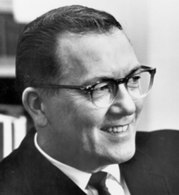| 94th United States Congress | |
|---|---|
93rd ← → 95th | |
 United States Capitol (c. 1970) | |
January 3, 1975 – January 3, 1977 | |
| Members | 100 senators 435 representatives 5 non-voting delegates |
| Senate majority | Democratic |
| Senate President | Nelson Rockefeller (R) |
| House majority | Democratic |
| House Speaker | Carl Albert (D) |
| Sessions | |
| 1st: January 14, 1975 – December 19, 1975 2nd: January 19, 1976 – October 1, 1976 | |
The 94th United States Congress was a meeting of the legislative branch of the United States federal government, composed of the United States Senate and the United States House of Representatives. It met in Washington, D.C., from January 3, 1975, to January 3, 1977, during the last two years of Gerald Ford's presidency.
Contents
- Major events
- Major legislation
- Party summary
- Senate
- House of Representatives
- Leadership
- Senate 2
- House of Representatives 2
- Caucuses
- Members
- Senate 3
- House of Representatives 3
- Changes in membership
- Senate 4
- House of Representatives 4
- Committees
- Special or select
- Senate 5
- House of Representatives 5
- Joint committees
- Employees
- Legislative branch agency directors
- Senate 6
- House of Representatives 6
- See also
- Notes
- References
- External links
This is the most recent Congress with a Republican senator from Hawaii, Hiram Fong, and Democratic senators from Utah and Wyoming, Frank Moss and Gale W. McGee. Fong retired and the other two lost re-election at the end of the 94th Congress. This is also the earliest Congress to feature members of the current 119th Congress , Chuck Grassley of Iowa and Ed Markey of Massachusetts (then as representatives, now as senators).
The apportionment of seats in this House of Representatives was based on the 1970 United States census. The Democrats not only maintained their majorities in the House and Senate, but would increase their numbers to supermajority status in both chambers.













